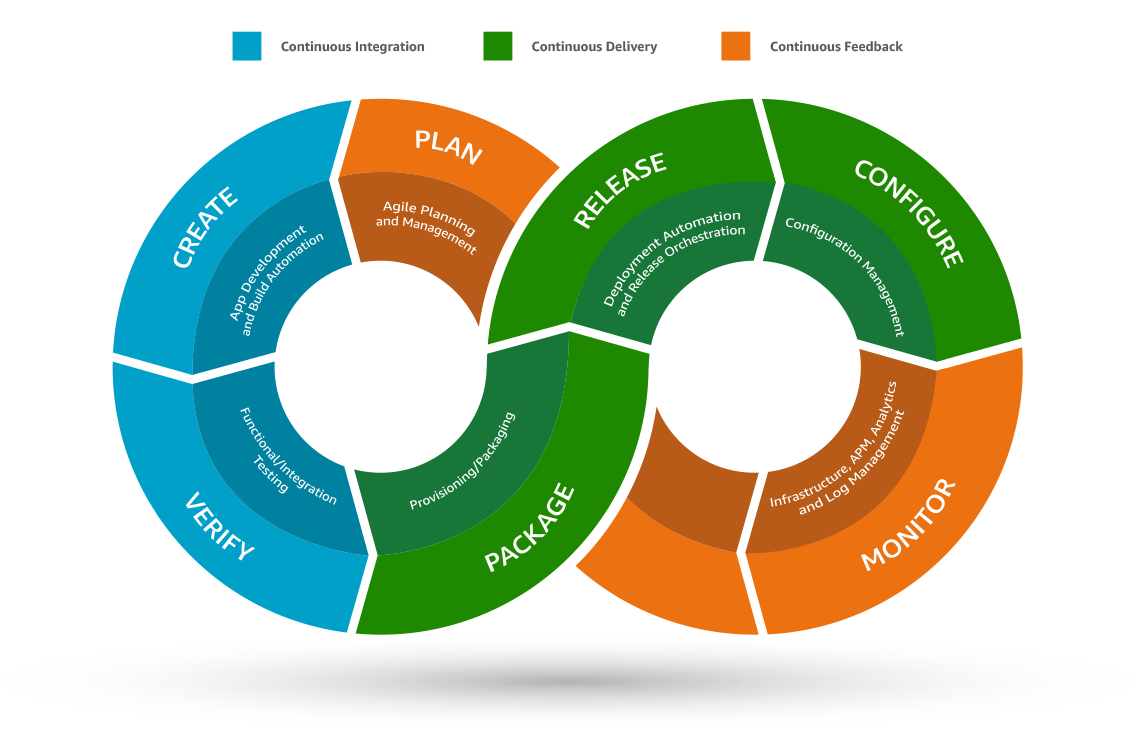DevOps With Closidus
DevOps automates the processes between software development and IT teams, in order that they can build , test and release Software faster and more reliably. The concept of DevOps is founded on building a culture of collaboration between teams that have historically functioned as siloes.Transitioning to DevOps requires a change in culture and mindset. At its simplest, DevOps is about removing the barriers between two traditionally siloed teams, development and operations. In some organizations, there may not even be separate development and operations teams; engineers may do both. With DevOps, the two teams work together to optimize both the productivity of developers and the reliability of operations. They strive to communicate frequently, increase efficiencies, and improve the quality of services they provide to customers. They take full ownership for their services, often beyond where their stated roles or titles have traditionally been scoped by thinking about the end customer’s needs and how they can contribute to solving those needs.Closidus can tailor the DevOps process and lifecycle for maximizing benefits in the following areas
Speed
Move at high velocity so you can innovate for customers faster, adapt to changing markets better, and grow more efficient at driving business results. The DevOps model enables your developers and operations teams to achieve these results.
Rapid Delivery
Increase the frequency and pace of releases so you can innovate and improve your product faster. The quicker you can release new features and fix bugs, the faster you can respond to your customers’ needs and build competitive advantage. Continuous integration and continuous delivery are practices that automate the software release process, from build to deploy.
Reliability
Ensure the quality of application updates and infrastructure changes so you can reliably deliver at a more rapid pace while maintaining a positive experience for end users. Use practices like continuous integration and continuous delivery to test that each change is functional and safe. Monitoring and logging practices help you stay informed of performance in real-time.


DevOps Tools.
The DevOps model relies on effective tooling to help teams rapidly and reliably deploy and innovate for their customers. These tools automate manual tasks, help teams manage complex environments at scale, and keep engineers in control of the high velocity that is enabled by DevOps.Closidus can help choose the right set of tools with an emphasis of simplicity, cost effectiveness and efficiency.

DevOps Practices
Closidus Consultants have successfully implemented DevOps CICD pipelines over the years.Here are some of the core areas where we can create tremendous value
Continuous integration
Continuous integration is a software development practice where developers regularly merge their code changes into a central repository, after which automated builds and tests are run. The key goals of continuous integration are to find and address bugs quicker, improve software quality, and reduce the time it takes to validate and release new software updates.
Continuous Delivery
Continuous delivery is a software development practice where code changes are automatically built, tested, and prepared for a release to production. It expands upon continuous integration by deploying all code changes to a testing environment and/or a production environment after the build stage. When continuous delivery is implemented properly, developers will always have a deployment-ready build artifact that has passed through a standardized test process.
Infrastructure as Code
Infrastructure as code is a practice in which infrastructure is provisioned and managed using code and software development techniques, such as version control and continuous integration. The cloud’s API-driven model enables developers and system administrators to interact with infrastructure programmatically, and at scale, instead of needing to manually set up and configure resources. Thus, engineers can interface with infrastructure using code-based tools and treat infrastructure in a manner similar to how they treat application code. Because they are defined by code, infrastructure and servers can quickly be deployed using standardized patterns, updated with the latest patches and versions, or duplicated in repeatable ways..
Communication and Collaboration
Increased communication and collaboration in an organization is one of the key cultural aspects of DevOps. The use of DevOps tooling and automation of the software delivery process establishes collaboration by physically bringing together the workflows and responsibilities of development and operations. Building on top of that, these teams set strong cultural norms around information sharing and facilitating communication through the use of chat applications, issue or project tracking systems, and wikis. This helps speed up communication across developers, operations, and even other teams like marketing or sales, allowing all parts of the organization to align more closely on goals and projects.